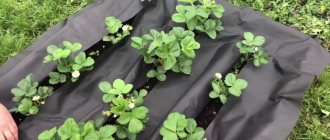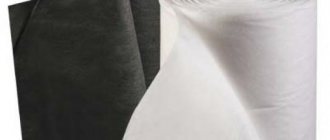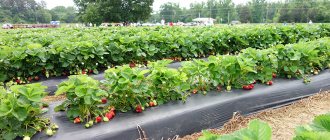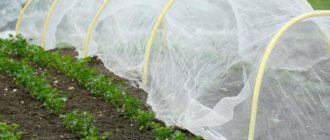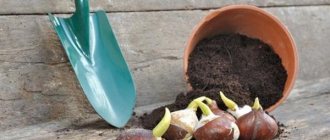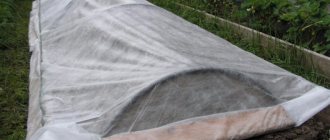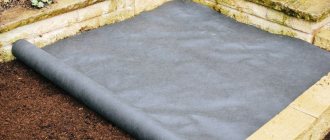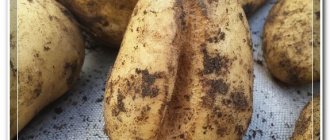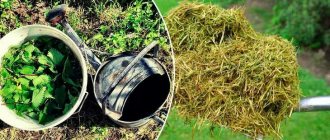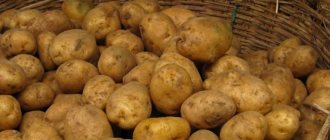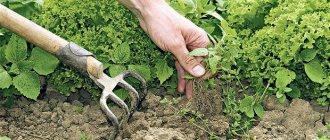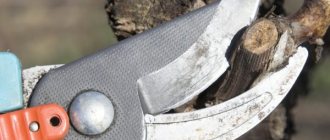Rarely a summer resident will allow weeds to grow on his site. Experienced vegetable growers and gardeners know that weeds have no benefit, but a lot of harm. Weeds take nutrition and moisture from crops, releasing toxic substances into the ground. All summer residents try to get rid of “uninvited guests” on their property by weeding their beds and flower beds throughout the summer. However, the weeds do not give up and appear again after each weeding. It is especially difficult to combat perennial weeds that reproduce by rhizomes, creeping shoots or multi-layered root suckers. Previously, such “infection” was removed from the site using black plastic film, cardboard sheets, old floor coverings and other materials that did not allow sunlight to pass through. Now manufacturers of goods intended for gardening are offering summer residents the use of non-woven weed covering material that is capable of allowing air and water to pass through, but blocking the sun's rays.
- 2 How to use covering material?
- 3 Black agrofibre or two-color material?
- 4 Agrofibre or film: which is more profitable?
- 5 The use of non-woven material when constructing paths
Types of non-woven covering materials
Nonwoven materials are produced not only to control weeds, but also to protect plants from return frosts and excessively scorching rays of the sun. Therefore, when choosing a material, you must pay attention to the manufacturer’s recommendations. Weed control material is sold on the market under different names, such as:
- "Agril";
- "Spunbond";
- "Lutrasil";
- "Agril";
- "Agrotex";
- "Lumitex";
- "Agrospan" and others.
Regardless of the name, manufacturers divide all non-woven covering materials into four groups:
- easy;
- average;
- white dense;
- black dense.
Each group is endowed with a certain set of properties and characteristics that influence the way this covering fabric is used. For example, light, low-density canvases are used to cover beds to protect seedlings from frost. Growing seedlings lift weightless material with their tops, while remaining under reliable shelter from unfavorable climate conditions. Non-woven fabrics from the fourth group, which have the highest density and are black in color, help in the fight against weeds. Thanks to its dark color, the material retains sunlight, while perfectly accumulating heat. The listed properties determine the main purpose of using non-woven material, which is to mulch beds.
Non-woven covering materials have unique qualities that allow them to inhibit the growth of weeds and ensure free penetration of moisture and air to the root system of plants
The essence and purposes of mulching
Mulching is an agrotechnical technique designed to create favorable conditions for the growth and development of plants. The top layer of soil is covered with special materials of a different texture, which produce one or another effect.
Basic goals:
- preventing excessive evaporation of moisture;
- protection of plants from frost and overheating;
- improving soil fertility;
- maintaining the breathability of the earth;
- prevention of soil erosion - washing out and weathering;
- slowing down the growth or completely destroying weeds.
The type of coating is selected in accordance with priority tasks.
How to use covering material?
Mulching agrofibre refers to non-woven polypropylene materials that do not cause any harm to cultivated plants, animals or people. At the same time, agrofibre does not give any chance to weeds, which die from the lack of light, trying to break through the dense material. The density of mulching covering materials is 50-60 grams per square meter.
Scheme for using non-woven weed covering material. Cultivated plants are planted in holes made with a sharp peg. Weeds die because they don't have access to sunlight.
The method of application is as follows:
- black agrofibre is spread on the soil that has dried out after winter and prepared for planting, to prevent weeds from sprouting over the entire area of the bed;
- seedlings are planted in cross-shaped slits made in the covering fabric with a sharp peg or cutting object.
The video shows how to use non-woven covering material using the example of growing strawberries:
Recent Entries
5 working ways to use tar in the garden 7 indoor plants that help you get married even in adulthood Indoor plants that can bloom in trouble
What is lutrasil
Lutrasil, what is it and how to use it in the garden?
These questions are most relevant for summer residents and gardeners who are looking for high-quality and durable covering material. These include lutrasil, which is obtained from non-woven synthetic fabric. For its production, polymer fiber is used, processed in a special way.
Lutrasil is called a non-woven covering material, since it is produced without the use of weaving technologies.
Synthetic fibers in its composition can be combined with natural materials - wool, linen, cotton. To make lutrasil, the polymer material is melted using special dies, producing long, continuous threads.
The resulting fibers are laid out on a conveyor belt and connected to each other using one of the following methods - under the influence of high temperature, using special binders, or needle puncture. As a result, the covering material lutrasil is obtained.
Black agrofibre or two-tone material?
Amateur gardeners, as well as farmers who grow fruits and vegetables on a large scale, are freed from the need to purchase and use herbicides against weeds. They also don’t have to spend time at their summer cottages with hoes, spending a lot of physical effort and time on weeding. There are simply no weeds. Only useful crops grow in even rows.
In addition, the fruits remain clean after rains, since they do not come into contact with the ground. Strawberries grown on beds covered with agrofibre can be harvested immediately after rain. The berries lie on a dry cloth and have an excellent presentation. They can be served on the table, lightly rinsed from dust, or taken to the market for sale. Using black mulching agrofibre, you can achieve earlier ripening of the crop. It is possible to reduce the growing time of crops to two weeks by early warming up the soil under cover.
The use of mulching agrofibre eliminates a large amount of work on caring for plantings in the garden, since there is no need to weed the beds
An interesting new product has appeared in the range of covering materials - two-color mulching agrofibre, which is superior in functionality to conventional black canvases. The manufacturer has improved the product by combining two thin layers of white and black. As a result, the covering material is black on one side and white on the other. The dark side of the canvas is laid on the ground, and the light surface is on top and reflects sunlight that falls on plants and fruits from below, accelerating their growth and ripening.
Important! The white surface of the mulching two-color agrofibre prevents the root system from overheating, which affects the growth rate of crops grown on the site and the uniformity of fruit ripening.
Mulching materials
Essentially, film for strawberries or any geotextile is mulching. They use a simple agricultural technique to make caring for a demanding crop easier. And in regions with rare precipitation, it reduces the consumption of irrigation water.
Organic mulch (at least 8-10 cm) or dense covering material (1 layer) gives the gardener the following advantages in open ground and greenhouses:
- the intensity and frequency of watering is reduced: moisture lasts longer under cover;
- the growth of weeds is inhibited - weeding is not necessary;
- no need to constantly loosen the soil;
- film, fabric or organic mulch protects the fertile layer from being blown away by winds and washed away by rainstorms;
- Not only is it easier to care for, but harvesting takes less time and effort, since the berries lie on mulch, film or fabric;
- The quality of the harvest is higher: without contact with the soil, the fruits are not affected by rot.
In soil covered with mulch, strawberries are warmer in winter, and in spring the earth warms up faster.
Organic
Natural materials for mulching strawberries:
- straw;
- sawdust after a couple of years of overheating, soaked in urea, because it draws nitrogen from the soil;
- pine needles (increases acidity - you have to add deoxidizers);
- cut weeds or green manure, compost: constant renewal of the layer, which, when rotting, provides additional nutrition to the berry bushes.
Since organic matter is a living environment, mulch will not protect against pests, fungi, and bacteria. The nutrient layer of green manure also feeds the weeds that grow fat on the enriched soil.
Inorganic mulch
Chemical industry products - agrotextiles and polyethylene film - used as mulch provide gardeners with additional benefits:
- the mustache is not able to take root, since it does not reach the ground: Victoria will not be able to reproduce uncontrollably;
- on strawberry plantations covered with black material in the spring, the soil warms up 1.5-2 weeks earlier - the harvest ripens ahead of schedule compared to traditional agricultural technology;
- Having packed the bed when planting young bushes, the summer resident does not worry about updating the shelter for a couple of years if using film, and the entire life cycle of strawberries is 4 years if grown under agrofibre;
- For many pests, conditions under the material are unfavorable.
Flaws:
- even inexpensive agrofibre requires material costs;
- the better and more durable the covering fabric, the more expensive it is;
- To water strawberries, you will have to install drip irrigation systems.
If the owners of small plots of land still choose how to plant strawberries - under cover or the old fashioned way, then large farms can no longer do without modern technologies.
Agrofibre or film: which is more profitable?
Most farmers and amateur gardeners continue to use black plastic film to control weeds the old fashioned way. However, it is more profitable to use mulching agrofibre, since this material:
- perfectly passes water, so watering can be organized by overhead irrigation;
- allows you to easily apply water-soluble fertilizers, which, passing through the canvas, are completely absorbed by plants;
- under the agrofibre, which allows air to pass through, mold and rot do not form, which cannot be said about plastic film;
- does not create a favorable environment for the development of pathogenic microbes that inhibit the root system of plants;
- protects the soil from drying out, due to which the top layer of soil does not compact and, therefore, does not need to be loosened;
- prevents the growth of weeds between rows, reducing labor costs.
Most modern mulching materials are designed to last for several seasons. For example, mulch covering material against weeds from AgroLux can be on the site from a year to three or more years.
When growing strawberries or wild strawberries, this is beneficial, since after a certain period of time the plantings need to be updated. At this moment, the covering material also changes, because the resource of the old canvas is completely exhausted. The service life of the covering fabric depends on the presence of a UV stabilizer in its composition, which protects the non-woven material from the destructive effects of ultraviolet radiation.
Mulching the soil with black non-woven materials allows you to grow tomatoes in your garden plot without much hassle or physical effort
What is the best way to cover?
You can get special material at any gardening store or via the Internet - this is not a problem. Many are more interested in which type is better to take - thick or thin, film or non-woven, and what color. Let's put it this way: black film, oddly enough, lasts much longer than non-woven material, and water is better retained in the soil underneath it - and this means a reduction in the amount of watering. Therefore, you can use both covering and the thinnest black. It allows water to pass through and weeds do not grow.
But why is two-color film so popular? The thing is that the white, silver and yellow color on top does not allow the soil to overheat, and therefore these are more favorable conditions for earthworms, as well as for the roots. Advantages:
- Fruits and berries do not touch the ground, and in the end they turn out perfectly clean.
- Weeding is not needed, and the amount of watering is reduced significantly.
- The crop ripens faster.
- Farming is absolutely environmentally friendly.
And all thanks to the fact that the outer white layer reflects the light that falls on the plants, while the black inner layer suppresses the growth of pests. And at the same time, the material itself breathes well and even allows water to pass through, protecting the soil and plant roots from overheating and burns. Why water less? Because in this case, much less moisture evaporates from the soil.
How to mulch the soil with lutrasil?
For mulching the soil, preference is given to ready-made material with holes. Sometimes they make the holes themselves. Before mulching, the soil is moistened abundantly. A cloth is laid on top. If there are no ready-made holes in the material, cross-shaped slits are made. Seeds are sown in each cut. Lutrasil is not removed until harvest.
Tip #1. To fix the material, it is advisable to use weights that are attached to the corners of the canvas or each edge is attached with wire to the ground.
Despite the fact that the material allows water to pass through, it is advisable to feed the crops at the root, while raising the cover. Liquid fertilizing on top of the canvas is possible. Water with rain over the cover, but do not select high pressure so that large puddles do not collect on the surface of the material.
Drip irrigation is suitable for crops in greenhouses covered with lutrasil
